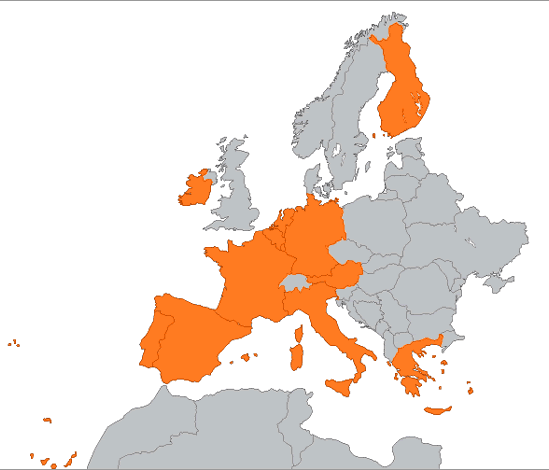Convergence and participants:
![]() Only countries with very similar economies can replace their domestic currencies
with a supra-national currency (see optimum currency
area.) To ensure the operational success of the EMU a strict set of
macroeconomic conditions were imposed in the Treaty on European Union -also
known as the Maastricht Treaty (1992), to potential member nations:
Only countries with very similar economies can replace their domestic currencies
with a supra-national currency (see optimum currency
area.) To ensure the operational success of the EMU a strict set of
macroeconomic conditions were imposed in the Treaty on European Union -also
known as the Maastricht Treaty (1992), to potential member nations:
- low inflation levels
- budget deficits no larger than 3% of national GDP
- overall government debt no larger than 60% of national GDP
- interest rates in close parity with low inflation countries'
- stable exchange rates within the European Monetary System
![]() 12 Member States of the European Union
(out of 15) are participating in the common currency. They are:
12 Member States of the European Union
(out of 15) are participating in the common currency. They are:
- Belgium
- Germany
- Greece
- Spain
- France
- Ireland
- Italy
- Luxembourg
- The Netherlands
- Austria
- Portugal
- Finland
Denmark, Sweden and the United Kingdom are members of the European Union but are not currently participating in the single currency. Denmark is a member of the Exchange Rate Mechanism II (ERM II) which means that the Danish krone is linked to the euro, although the exchange rate is not fixed.
